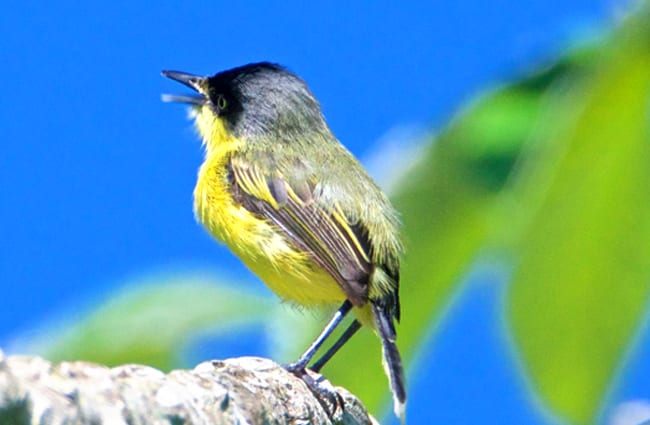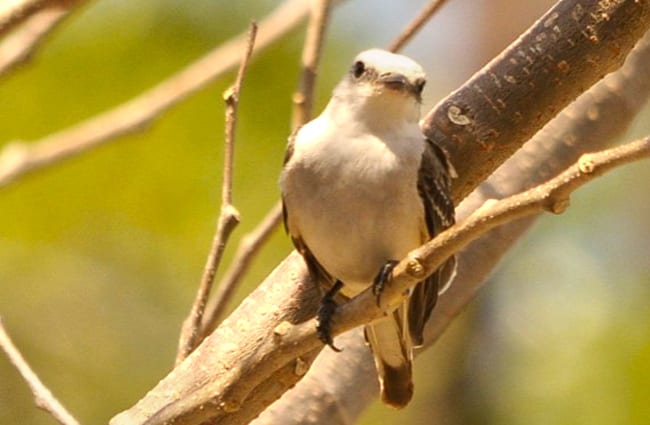A Comprehensive Guide to Flycatchers
Flycatchers represent a fascinating group of birds renowned for their aerial hunting prowess and melodious songs. Old World flycatchers belong to the family Muscicapidae, while New World flycatchers are placed in the family Tyrannidae. These insectivorous birds play a vital role in controlling insect populations and maintaining ecosystem health. This guide delves into the world of flycatchers, exploring their habitats, behaviors, evolutionary history, and interactions with both the environment and humans.

Understanding Flycatcher Habitats and Distribution
Flycatchers exhibit a remarkable diversity in habitat preference, occupying a wide range of environments from dense forests and woodlands to open grasslands and urban areas. Their distribution spans across continents, with notable concentrations in North and South America, Europe, Africa, and Asia. Several factors influence their habitat selection, including the availability of suitable nesting sites, the abundance of insect prey, and the presence of protective cover from predators.
Many species migrate long distances to breed in temperate regions during the warmer months, returning to tropical or subtropical areas for the winter. This migratory behavior ensures access to optimal breeding conditions and abundant food resources throughout the year. For example, the Eastern Phoebe, a North American flycatcher, often nests under bridges and eaves of buildings, demonstrating adaptability to human‑modified landscapes.
Finding Flycatchers in the Wild
For birdwatchers eager to spot these agile fliers, knowing where to look is crucial. Focus on areas with dense foliage, particularly near streams, ponds, or open fields. Flycatchers often perch on exposed branches or twigs, scanning for insects before darting out to capture them in mid‑air. Early morning and late evening are typically the most active feeding times. Learning to identify their distinct calls can also greatly enhance your chances of locating them.
The Evolutionary History of Flycatchers
The evolutionary lineage of flycatchers is complex and has been subject to ongoing research. Traditionally, the family Muscicapidae encompassed a broad range of insectivorous birds. However, recent phylogenetic studies, utilizing genetic data, have led to significant revisions in taxonomic classifications. It is now understood that the Old World flycatchers are distinct from the New World flycatchers, which form a separate family.

The divergence between these two groups is estimated to have occurred tens of millions of years ago. The New World flycatchers exhibit a greater diversity in morphology and behavior, reflecting adaptation to a wider range of ecological niches in the Americas. The Old World flycatchers, while having fewer species, have successfully colonized a variety of habitats across Europe, Asia, and Africa.
Diet and Hunting Strategies
As their name suggests, flycatchers are primarily insectivorous, feeding on a wide variety of flying insects, including flies, moths, beetles, and wasps. Their diet plays a critical role in regulating insect populations and maintaining ecosystem balance. Flycatchers employ several distinctive hunting strategies to capture their prey.
Many species utilize a “sally‑forth” technique, perching on an exposed branch and darting out to snatch insects in mid‑air before returning to the same perch. Others employ a “hawking” strategy, actively pursuing insects in flight. Some flycatchers, like the Great Crested Flycatcher, will also glean insects from foliage or catch them on the ground. The shape of their bills and bristles around the bill are specifically adapted to facilitate efficient insect capture. Wide mouths help to funnel insects inward.
Mating and Reproduction
Flycatchers typically exhibit monogamous mating systems, forming pair bonds that often last for a single breeding season. The breeding season varies depending on the species and geographic location. Males often attract females through elaborate courtship displays, involving vocalizations, aerial acrobatics, and the presentation of food items.

Nests are typically constructed by the female, using materials such as twigs, grass, leaves, and spiderwebs. Nest locations vary depending on the species, ranging from tree cavities and rock crevices to open cups built on branches. Clutch sizes typically range from three to six eggs. Both parents participate in incubating the eggs and feeding the young. Fledglings leave the nest after approximately two to three weeks, but continue to be fed by their parents for several more weeks.
Ecological Roles and Inter‑species Interactions
Flycatchers are integral components of many ecosystems, fulfilling essential ecological roles. As insectivores, they help to control insect populations, preventing outbreaks that could damage crops or forests. They also serve as prey for larger birds of prey and mammals.
Flycatchers often engage in interspecific competition with other insectivorous birds for resources. In some cases, they may also exhibit cooperative behaviors, such as sharing information about food sources or defending territories against intruders. Additionally, some flycatcher species are hosts to parasitic insects, such as fleas and lice.
Flycatchers and Human Interactions
Humans have a long‑standing relationship with flycatchers, ranging from admiration for their beauty and song to practical benefits from their insect‑control services. Flycatchers are popular subjects for birdwatchers and photographers. Their presence can also indicate a healthy environment, making them valuable indicators of ecological quality.

However, habitat loss and degradation pose significant threats to many flycatcher populations. The use of pesticides can also negatively impact flycatchers, both directly through poisoning and indirectly by reducing their food supply. Conservation efforts, such as habitat restoration and sustainable land management practices, are essential to ensure the long‑term survival of these remarkable birds.
Caring for Flycatchers in Captivity
For zookeepers and aviculturists, providing appropriate care for flycatchers requires a thorough understanding of their natural history and behavioral needs. Enclosures should be spacious, with ample perching opportunities and vegetation to provide cover. The diet should consist primarily of live insects, such as mealworms, crickets, and flies, supplemented with fruit or berries.
Maintaining appropriate humidity and temperature levels is crucial for their health. Enrichment activities, such as providing puzzle feeders or novel perches, can help to stimulate their natural foraging behaviors. Careful monitoring for signs of illness or stress is essential. It is also important to avoid overcrowding and provide opportunities for privacy.
Interesting Flycatcher Facts
Here are some fascinating facts about flycatchers:
- Some flycatcher species are known for their incredible aerial agility, capable of catching insects in mid‑flight with remarkable precision.
- The Scissor tailed Flycatcher is renowned for its extraordinarily long tail, which it uses for stability and maneuverability during flight.
- Certain flycatcher species, such as the Social Flycatcher, are known for their cooperative breeding behaviors, where multiple individuals help to raise a single brood.
- Flycatchers have evolved specialized feather structures that reduce wind resistance and enhance their flight capabilities.
- The vocalizations of flycatchers are often complex and varied, used for communication, territorial defense, and mate attraction.

Conclusion
Flycatchers are a captivating group of birds that play a vital role in maintaining ecological balance. Their remarkable hunting skills, melodious songs, and diverse behaviors make them a source of fascination for birdwatchers and scientists alike. By understanding their natural history and conservation needs, we can help ensure that these remarkable birds continue to thrive for generations to come.




![Red Angus Closeup of a beautiful Red Angus cowPhoto by: U.S. Department of Agriculture [pubic domain]https://creativecommons.org/licenses/by/2.0/](https://animals.net/wp-content/uploads/2020/03/Red-Angus-4-238x178.jpg)




![Red Angus Closeup of a beautiful Red Angus cowPhoto by: U.S. Department of Agriculture [pubic domain]https://creativecommons.org/licenses/by/2.0/](https://animals.net/wp-content/uploads/2020/03/Red-Angus-4-100x75.jpg)

